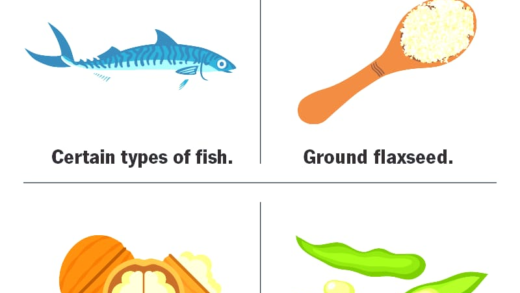This article covers critical aspects of fuel pump performance, including common symptoms of failure, diagnosis techniques, and preventive measures. It also addresses FAQs, replacement necessities, and cost expectations, providing comprehensive insights for vehicle owners.
Common Symptoms of a Bad Fuel Pump: Identifying the Signs
Fuel pump symptoms are critical to recognize early. A failing fuel pump can lead to various issues, ultimately affecting your vehicle’s performance. Common signs include:
- Engine Stalling: If your engine suddenly stalls while driving, this could indicate fuel delivery problems caused by a bad fuel pump.
- Difficulty Starting: A failing fuel pump may struggle to deliver the necessary fuel pressure to start the engine, resulting in long cranking times.
- Loss of Power: Noticeable power loss during acceleration or climbing hills can signal fuel pump issues.
- Unusual Noises: Hearing whining or buzzing noises from the fuel tank can be a red flag for a failing pump.
Identifying these symptoms early can save you from more extensive repairs down the road. Keep an eye on your vehicle’s behavior, and don’t hesitate to consult a mechanic if you notice any of these signs.
Performance Issues Linked to Fuel Pumps: How They Affect Your Ride
Fuel pump performance issues significantly impact your ride. A malfunctioning pump can lead to:
- Poor Fuel Efficiency: A bad fuel pump may not supply the right amount of fuel, leading to decreased fuel efficiency.
- Engine Misfires: Irregular fuel delivery can cause the engine to misfire, resulting in a rough driving experience.
- Overheating: Insufficient fuel can cause the engine to overheat, leading to severe damage.
Understanding how these performance issues relate to your fuel pump can help you maintain your vehicle better. Regular check-ups are essential to ensure your fuel pump operates efficiently.
Noises from the Fuel Pump: What Sounds Indicate Trouble?
Noises from the fuel pump are often the first warning signs of trouble. Recognizing these sounds can prevent further damage. Common noises include:
- Whining Noise: A persistent whining noise coming from the fuel tank indicates the pump is struggling to operate.
- Clicking or Popping Sounds: These sounds may indicate debris in the pump or a failing motor.
- Hissing Noises: A hissing sound can suggest a fuel leak, often linked to pump issues.
Pay attention to these noises. If you hear anything unusual, it’s wise to investigate immediately. Ignoring these sounds can lead to costly repairs.
Diagnosing Fuel Pump Problems at Home: Simple Steps to Follow
Diagnosing fuel pump problems is crucial to maintain your vehicle’s health. Fuel pump symptoms can often be detected without professional help. Here are some simple steps:
- Check the Fuel Gauge: Ensure there’s enough fuel in the tank. A faulty gauge can mislead you.
- Listen for the Pump: Turn the key to the “on” position without starting the engine. You should hear a humming noise from the fuel pump. If not, the pump might be failing.
- Inspect the Fuel Filter: A clogged filter can mimic fuel pump failure symptoms. Check and replace it if necessary.
- Check the Fuel Lines: Look for any leaks or blockages in the fuel lines. Any visible damage could affect fuel flow.
- Use a Fuel Pressure Gauge: If you have access to one, connect it to the fuel rail. Normal pressure readings indicate the pump is working properly.
Following these steps can help you identify potential fuel pump issues. If you suspect a problem after your checks, it’s best to consult a mechanic for a thorough inspection.
What to Do If You Suspect Your Fuel Pump is Bad
If you suspect your fuel pump is bad, taking immediate action is vital. Ignoring symptoms can lead to more severe vehicle issues. Here’s what you should do:
- Don’t Drive the Vehicle: Continuing to drive can worsen the problem and lead to complete failure.
- Check for Diagnostic Codes: Use an OBD-II scanner to check for any error codes related to the fuel system.
- Inspect the Fuel Filter: As mentioned earlier, a clogged filter can cause similar symptoms. Replace it if needed.
- Consider a Fuel Pressure Test: If you’re comfortable, conduct a fuel pressure test to assess pump functionality.
- Seek Professional Help: If problems persist, consult a mechanic. They can perform a more detailed diagnosis and suggest necessary repairs.
Taking these steps can help mitigate further damage and ensure your vehicle remains safe to drive.
Preventative Measures: How to Avoid Fuel Pump Failure
Preventing fuel pump failure is easier than dealing with the consequences. Here are effective ways to extend your fuel pump’s life:
- Regular Maintenance: Schedule regular check-ups to ensure all components of your fuel system are functioning properly.
- Keep the Tank Full: Avoid running low on fuel. It helps prevent overheating and sediment buildup.
- Use Quality Fuel: Fill up with high-quality fuel to reduce contaminants that can harm your pump.
- Change Fuel Filters Regularly: A clean filter prevents debris from reaching the pump, enhancing its longevity.
- Avoid Short Trips: Frequent short trips can prevent the fuel pump from reaching optimal temperature, leading to wear and tear.
Implementing these preventative measures can significantly reduce the chances of fuel pump failure and keep your vehicle running smoothly for years to come.
FAQs About Fuel Pump Issues: Common Questions Answered
Fuel pump symptoms often lead to confusion among drivers. Here are some frequently asked questions regarding fuel pump performance:
- How can I tell if my fuel pump is failing? Look for signs like difficulty starting the engine, stalling, or unusual noises. If these symptoms are present, your fuel pump may need attention.
- What causes fuel pump failure? Common causes include lack of fuel, dirt in the fuel, and electrical issues. Regular maintenance can help prevent these problems.
- Can I drive with a bad fuel pump? It’s advisable not to drive with a suspected bad fuel pump. Continuing to drive can worsen the issue and lead to more extensive repairs.
- How long do fuel pumps last? Typically, a fuel pump can last anywhere from 100,000 to 150,000 miles, depending on usage and maintenance.
Understanding these common questions can prepare you for potential fuel pump issues and help you take action sooner.
Fuel Pump Replacement: When Is It Necessary?
Knowing when to replace your fuel pump is crucial for maintaining your vehicle. Signs that indicate a replacement may be necessary include:
- Persistent Symptoms: If you’ve been experiencing ongoing symptoms like stalling or difficulty starting, it may be time for a replacement.
- Increased Noise: Noises from the fuel pump that worsen over time can indicate that it is failing.
- Fuel Leaks: Any visible fuel leaks near the pump or fuel lines are a serious concern and require immediate replacement.
Consulting a mechanic for a professional assessment is advisable if you observe these signs. Early replacement can save you from more severe vehicle problems.
The Cost of Fuel Pump Repairs: What to Expect
Understanding the financial implications of fuel pump repairs can help you budget accordingly. The costs associated with fuel pump repairs typically include:
- Parts Costs: A new fuel pump can range from $100 to $500, depending on the make and model of your vehicle.
- Labor Costs: Labor costs can vary widely, but you can expect to pay between $50 to $150 per hour for professional services.
- Total Repair Costs: In total, you might be looking at $300 to $1,200 for complete fuel pump replacement, including parts and labor.
Being aware of these costs can help you prepare for repairs. It’s wise to get multiple estimates from different mechanics to ensure you’re getting a fair price.





Comments are closed.